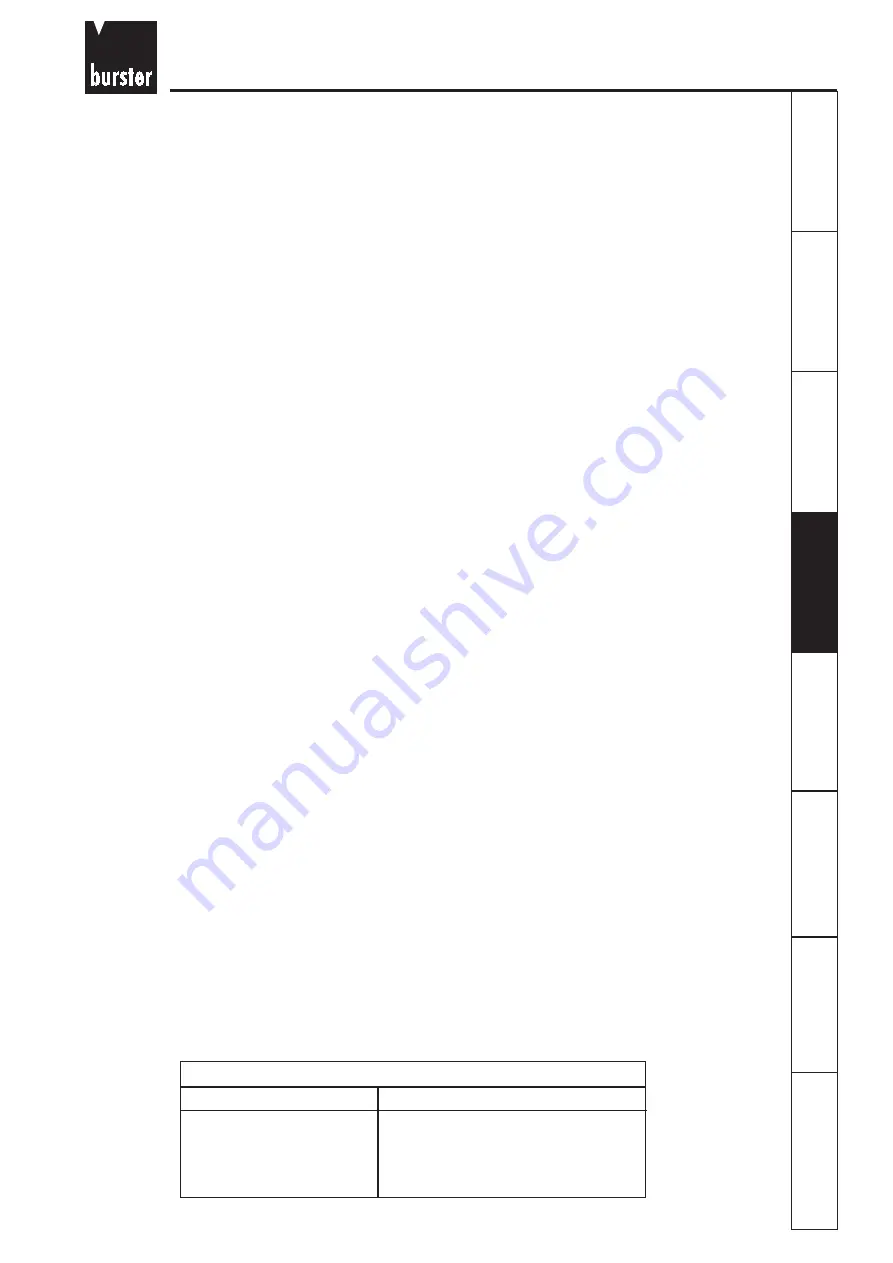
Model 2302-V001
RESISTOMAT
®
Page 17
Brief guide
Operation
Calibration
Test and offset
instructions
RS232 data
output
Introduction &
applications
Description of functions
Accessories and Circuit diagram
Operation
Evidently, the display is heavily distorted in the higher ranges due to the inclusion of the zero
error.
The most accurate display is provided in the 2 m
Ω
range.
After determining a suitable measurement range, you must decide whether it is permissible
for the test object to be loaded by the current stated on the left half of the switch's scale.
If no falsification resulting from heating is involved, you should select the higher current for
the resistance range in question. It generates the higher measurement signal, thus reducing
the potential of interference by the zero error and thermal e.m.fs.
The standard maximum measurement currents for a copper wire with a cross-section of 1.5
mm
2
are 1 A in air and 3A in water (1m has approx. 12 m
Ω
, so the 50 m
Ω
range is suitable
here).
Connecting the test object
As shown in Section 2, route the voltage ter U / - U to the ends of the actual
measurement path.
The current connections on the test object should be placed far enough from the potential
taps to allow an even distribution of the measurement current up to the potential taps,
otherwise the resistance value determined is higher than the actual resistance of the path
(the current is concentrated over a smaller cross-section).
For stranded copper conductors, it is not necessary to make contact with every single wire,
as the mutual contact between these wires is sufficient. However, this property and thus the
U-I spacing of the measurement connections is slightly dependent on the strand density.
Experience has shown that for cross-sections of more than 300 mm
2
, a path of 80 cm
between the U and I terminals is required on both sides.
Pressed-on wedge bonds are suitable as potential taps. If the current is distributed evenly,
contact with the entire circumference of the test object is not required, as the tangential
potential is the same everywhere.
The cross-sections of the potential leads routed to the RESISTOMAT
®
device do not
significantly influence the measurement.
The current path must be configured such that the voltage drops listed in the table below are
not exceeded; this is to ensure that the current remains stable.
To be on the safe side, the values for mains undervoltage will be considered.
Of course, these voltage values are much higher than the values measured directly on the
test object. This, for example, also allows a series connection of several test objects with
changevoer of the potential taps.
2302
Mains voltage
3 A
1 A
- 10 %
4 V
6 V
Rated value
5 V
7 V
+ 6 %
6 V
8 V
















































